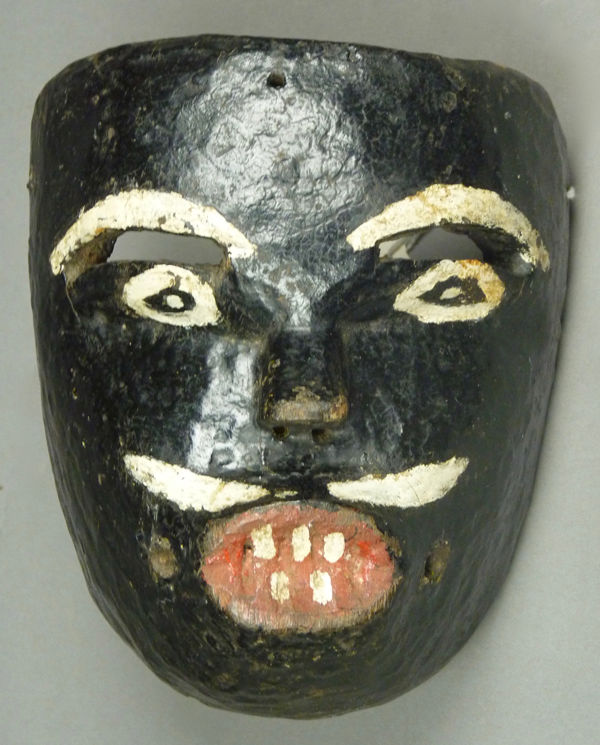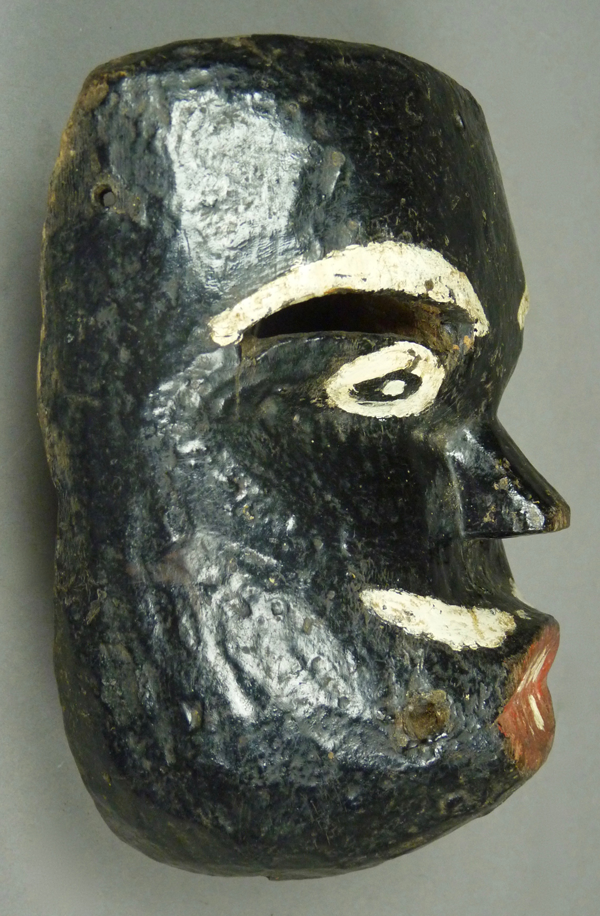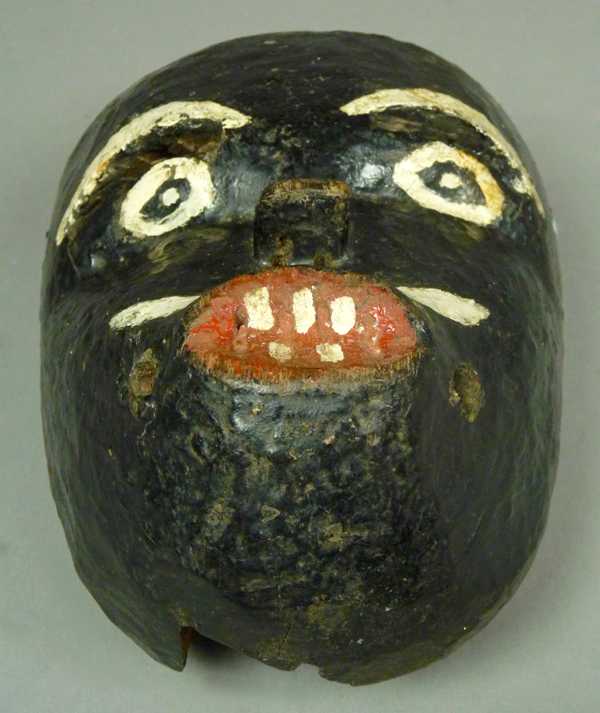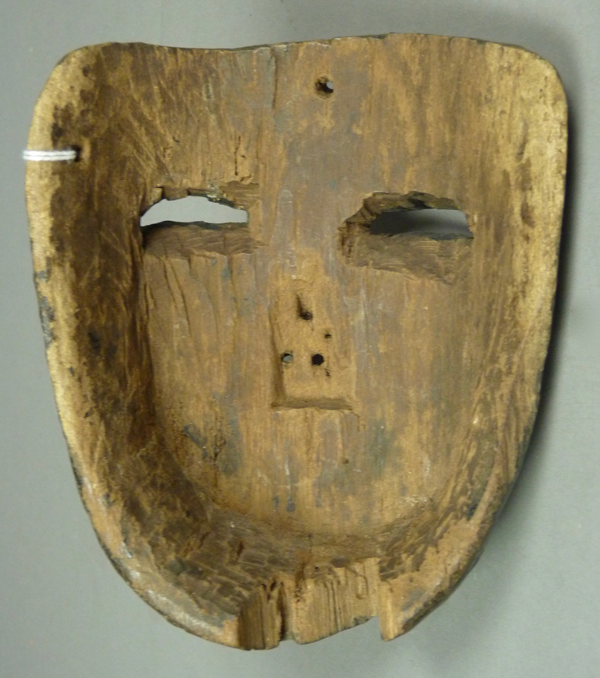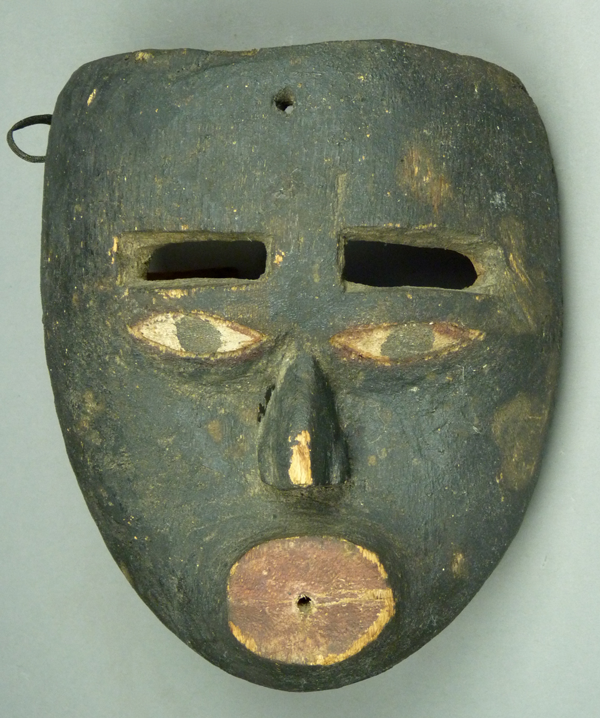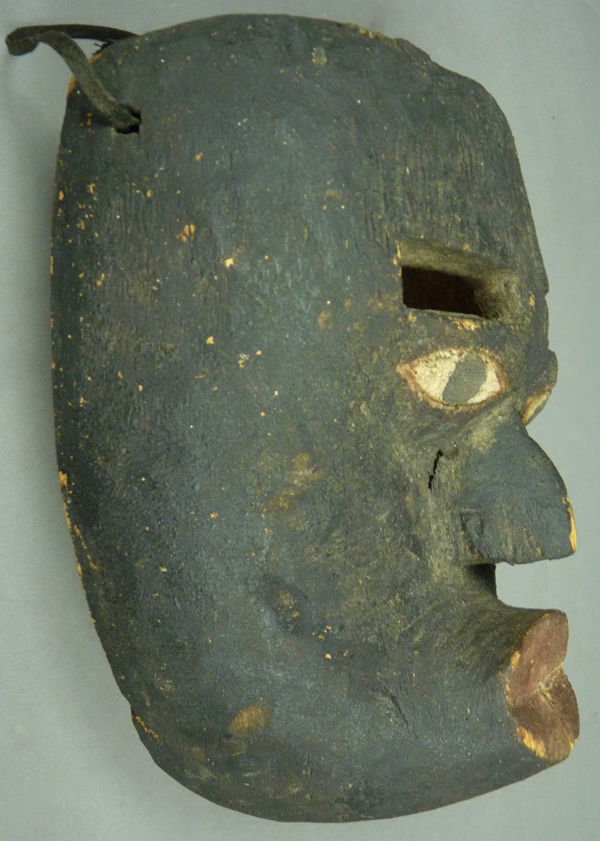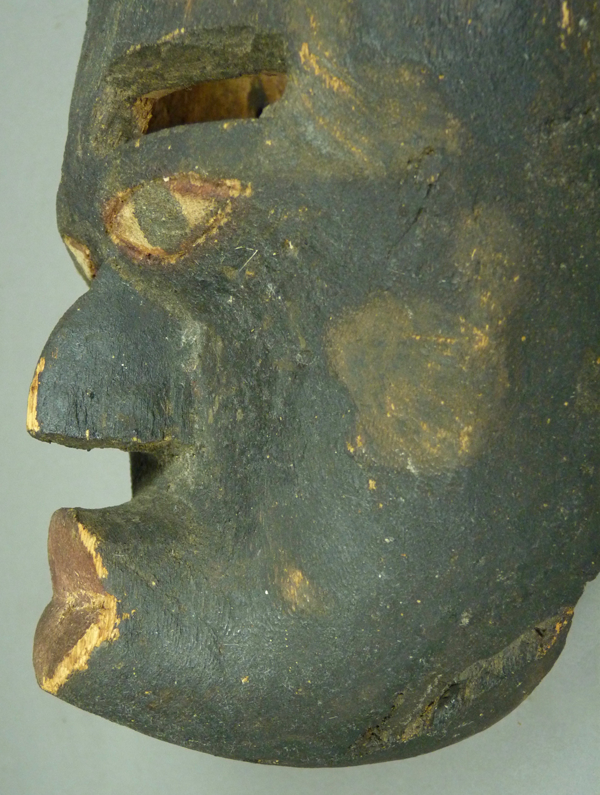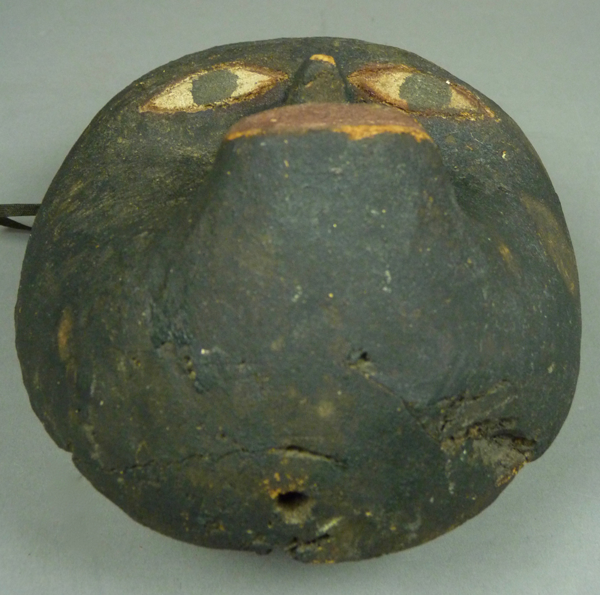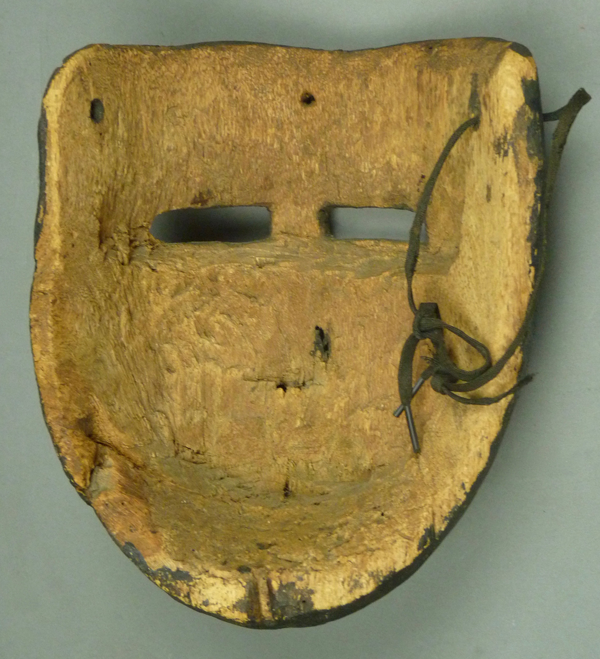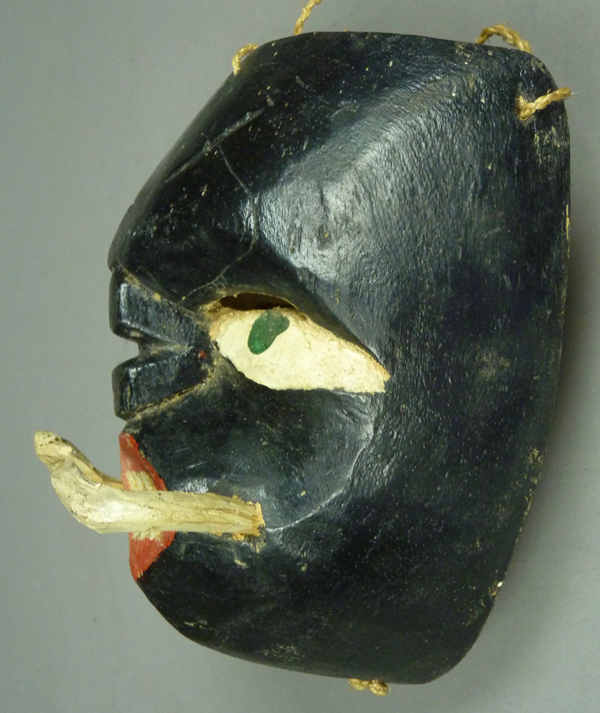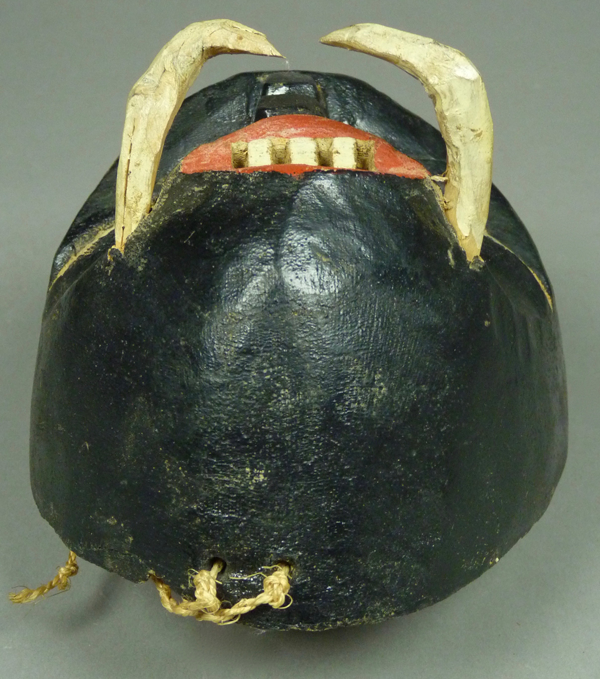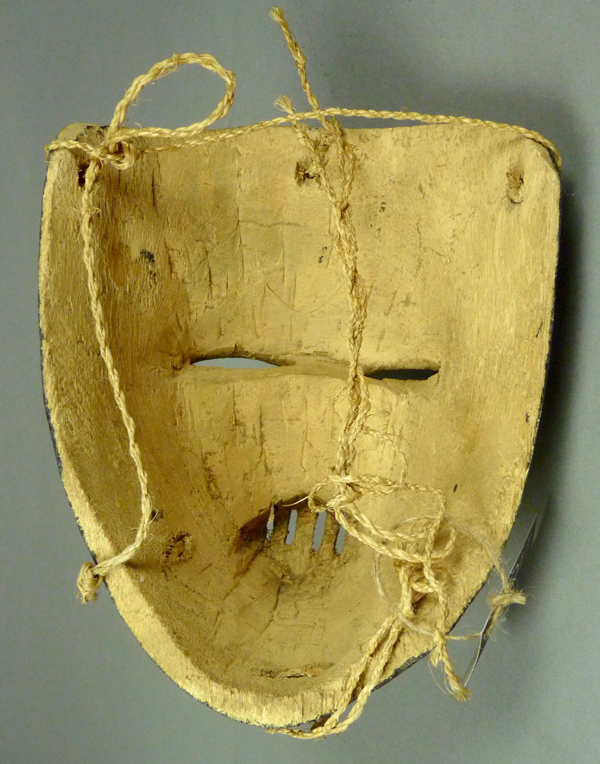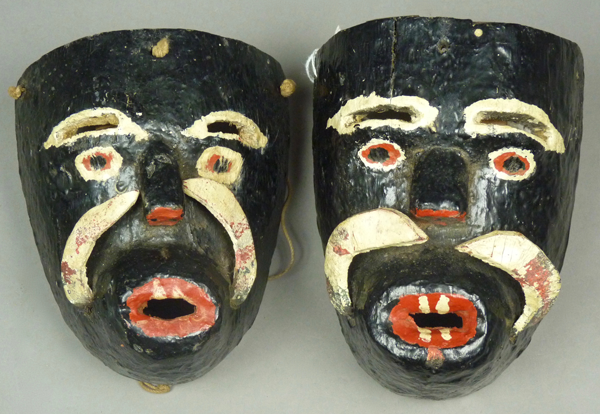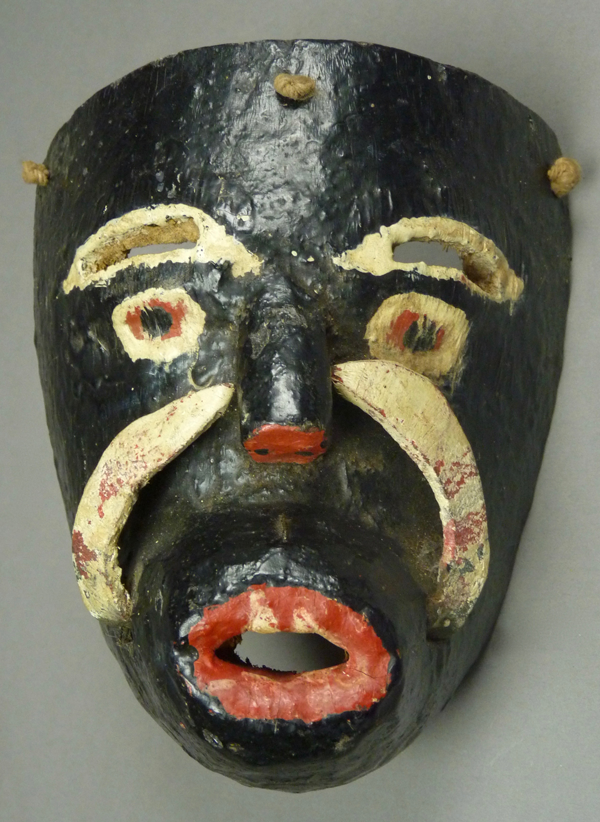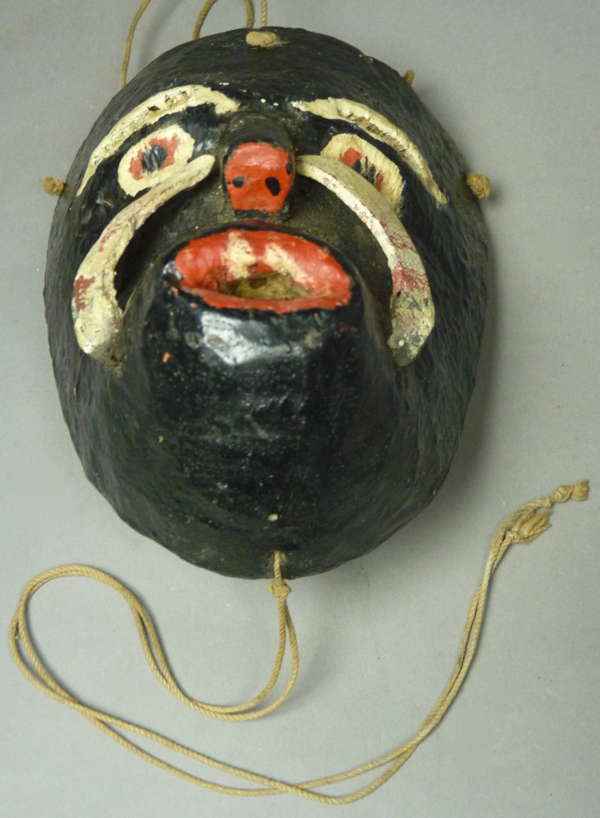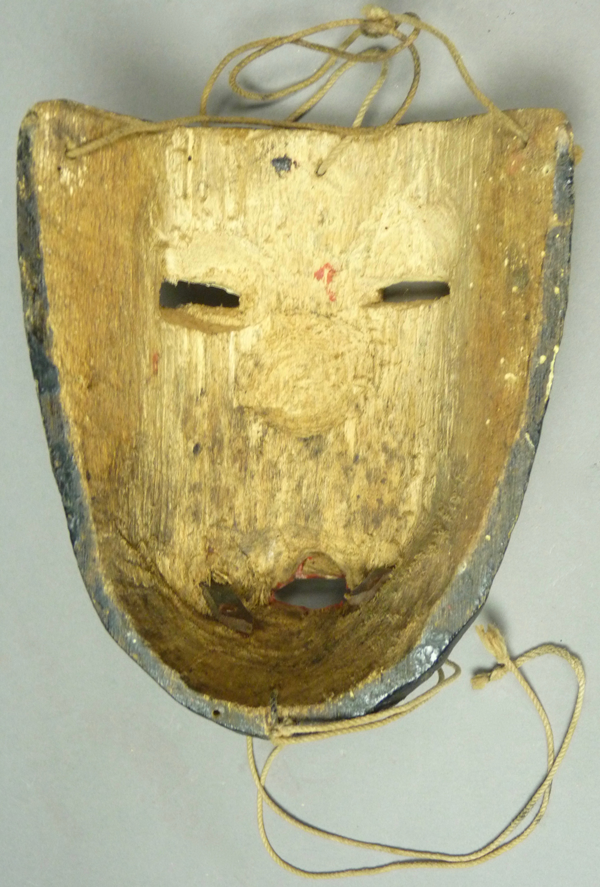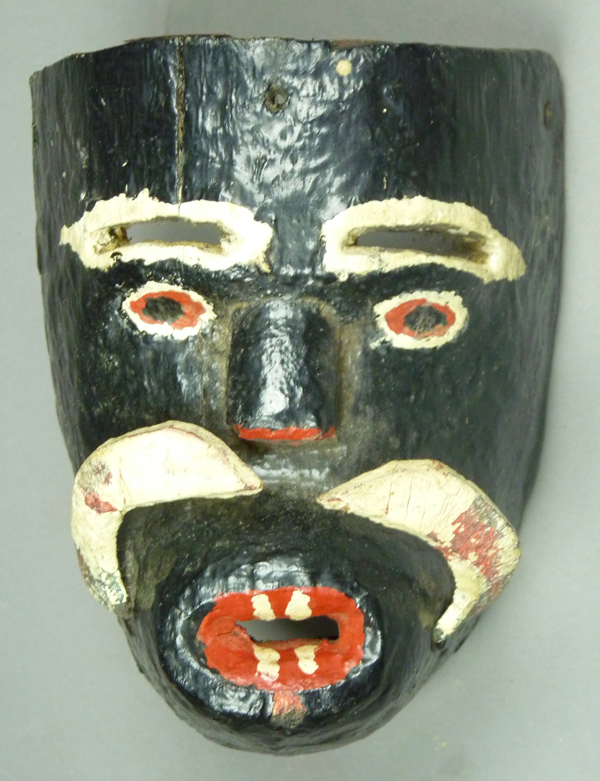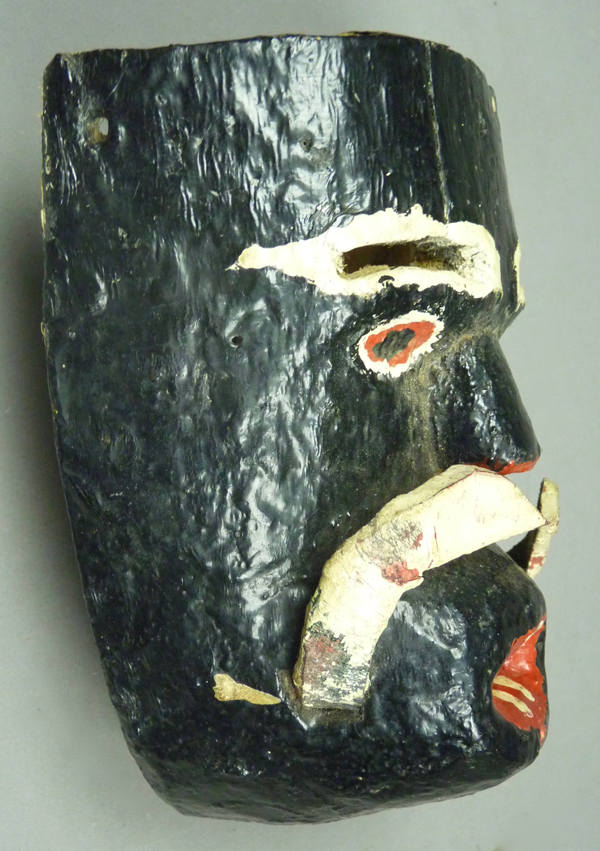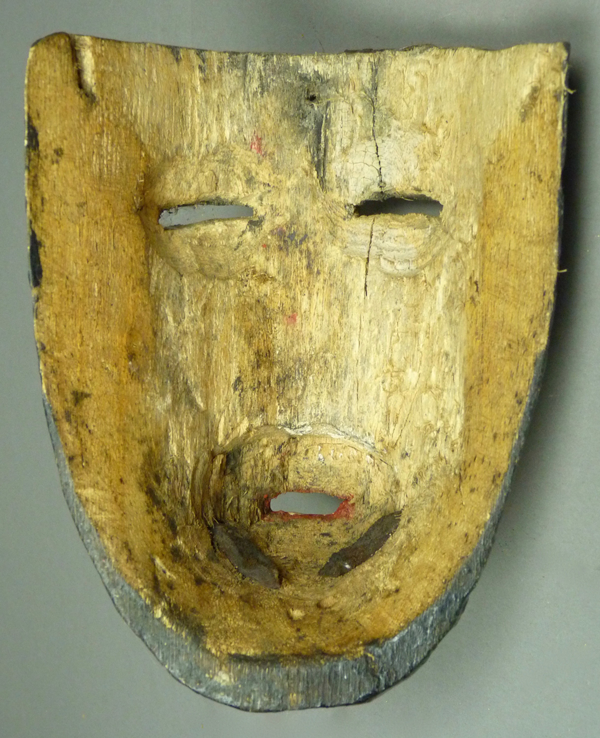In my posts of August 13 and 20, 2018, I featured Tusked Negrito masks from the Sierra Juárez of the Mexican state of Oaxaca. Currently I am anticipating the arrival of several more masks from this tradition, and I hope to share these with you in next week’s post. So, in the absence of any new material at present, I am going to recycle what I wrote in August 2018 as an introduction to the new arrivals that we will examine next week.
In 1975, Virginia E. Miller, Dudley M. Varner, and Betty A. Brown published an important article in The Masterkey, the Journal of the Southwest Museum (Volume 49, No. 2, April-June 1975, pp. 44-50)—”The Tusked Negrito Mask of Oaxaca.” The authors began by noting that these are but one example of a larger class of darkly colored masks worn by “masked buffoons” who “act as clowns, masters of ceremony, and policeman during the ceremonies (page 44).” Tusked Negrito masks are used in Zapotec and Mixe towns in the Mexican state of Oaxaca. “They usually appear in pairs accompanying the Plume Dance” and these masks can also be used in related dances in this region, sometimes in larger groups. There are similar snouted masks that lack tusks in neighboring communities. The authors speculate that the Tusked Negrito image may be a survival of some pre-Conquest tradition. In earlier posts I have shown other examples of masks worn by black-faced ritual clowns, such as Yaqui Pascolas and Negritos from the coastal Mixtec towns.
The Tusked Negrito article includes a photo of four Tusked Negrito masks from the Paul Pérez collection. Here is that image.
https://www.worthpoint.com/worthopedia/tusked-negrito-mask-oaxaca-masterkey-472740928
The Paul Pérez collection is currently available for viewing in the Nettie Lee Benson Latin American Collection, The University of Texas at Austin, and in the link that follows you can see color photos of three of those four masks—numbers 20, 78, and 81, plus several others (94 and 176). There are many other interesting masks in this collection, of which I would like to highlight just one more—#101—which would appear to be a rather rare example of a Chilolo mask from Oaxaca.
| https://legacy.lib.utexas.edu/taro/utlac/00355/lac-00355.html |
In May of 1996 I found a wonderfully worn Tusked Negrito mask in Austin, Texas, at the Tesoros Trading Company, an ethnographic arts store
Here is that mask. The wooden or leather tusks are missing, but the recesses that had held them are evidence of their earlier presence.
Tusked Negrito masks tend to have snouted mouths. The tusks can be made from leather or wood, in the absence of suitable animal tusks.
Note the stylized nose.
As I will demonstrate, masks from the Sierra de Juarez tend to have an unusual characteristic—they have a hole or holes at chin level to attach what is apparently a neck strap. permitting the dancer to allow the mask to flop down on his chest, upside down and with the back exposed, during periods between performances. I don’t recall masks with this feature from any other parts of Mexico, but you will find evidence of this feature on all of today’s masks. In the present case the wood split along a line adjacent to the chin hole, and only a cross-sectional view of the hole remains. This mask is 7 inches tall, 5½ inches wide, and 3 inches deep.
The back is darkly stained from long use.
The Tusked Negrito dancers wear elaborate costumes. Here is a Youtube™ video of them dancing in Yalalag, Oaxaca (a Zapotec Indian town). They are wearing masks with tusks. I note in this video that they are referred to as “Negritos collmilludos.” “Collmilludos” means fanged or tusked.
https://www.youtube.com/watch?v=Y-wJy7PqZy4
Here is another video of dancers from Yalalag, Oaxaca. In these images the masks appear to lack tusks.
https://www.youtube.com/watch?v=H5OY36xJLeE
I found the second mask on EBay™ in 2007. This mask too has marked patina from age and use.
At first glance, one notices the absence of tusks on a mask that has the typical snouted mouth of a Tusked Negrito. Then one recalls the example from the Pérez Collection that has feathers instead of tusks. If there were feathers, they left almost no trace. However, close inspection reveals a bare spot to the viewer’s right and a small irregularity at the same place on the left, possibly glue residue, so I suspect there may have been feathers there, but maybe not.
In any event. I really like the snouted profile of this mask. The lips are pursed, as if this mouth is blowing air. Such imagery has led anthropologists to suspect that such a mask represents some pre-Columbian god such as Ehecátl, the god of wind.
The bare spot on the left side of the snout.
The hole at chin level for a neck strap. This mask is 7½ inches tall, 7 inches wide, and 3½ inches deep.
The back shows obvious staining from use.
I found the third mask at the Indigo Arts Gallery in the Philadelphia (Pennsylvania) area, in 1996. It was said to be from the area of Ayutla, Oaxaca. Indigo Arts is also still in business, and still selling Mexican Masks.
https://indigoarts.com/galleries/dance-masks-mexico
This example has carved wooden tusks, and a mouth style that one often sees on Tusked Negrito masks from this region.
This mask has a very unusual stylized nose, supporting the idea that Tusked Negrito masks may represent pre-Columbian gods.
Here is an intact neck strap, attached at chin level. This mask is 7½ inches tall, 6 inches wide, and 4½ inches deep.
This mask has moderate staining from use.
Then on August 20, 2018, I showed another pair of Tusked Negrito Masks, which had apparently been made in the 1950s, and which were obtained in 1995 from the estate of the Rex Markham collection in Oaxaca, Mexico. They are very similar to one another, and each has leather tusks.
Here is the smaller of the two.
Two upper teeth are indicated by paint on the upper lip. In general there appear to be layers of old paint and the current features probably reflect sloppy repainting.
Like the masks in the previous week’s post, these have blowing mouths.
This mask is 6 inches tall, 5¼ inches wide, and 3 inches deep. It retains an original neck strap that is attached to the chin.
The back is stained from use. There is evidence of a mild infestation of boring insects along the right side, but no sign of significant damage. The ends of the leather tusks pierce the mask on both sides of the open mouth, and in this rear view it is particularly clear that the tusks are made of leather.
Here is a Youtube™ video of dancers wearing such masks.
https://www.youtube.com/watch?v=ufNAPosU7kw
The second mask is slightly taller, there are four painted teeth on the lips, and the leather tusks seem a little larger.
Otherwise these two masks are very similar.
This mask too has holes in the chin for the attachment of a neck strap.
It is 6¼ inches tall, 5 inches wide, and 3 inches deep.
The back has similar staining as the first, and the holes in the back of the chin for a neck strap are also visible in this view. The ends of the leather tusks are also prominent on the back of this mask.
Next week we will examine seven additional masks that I am currently adding to my collection—one more Negrito mask with leather tusks along with a set of six Negrito masks without tusks that would appear to also be from the Sierra de Juárez of Oaxaca. All had also been obtained from the Rex Markham Oaxacan collection, 30 or 40 years ago.
Bryan Stevens

